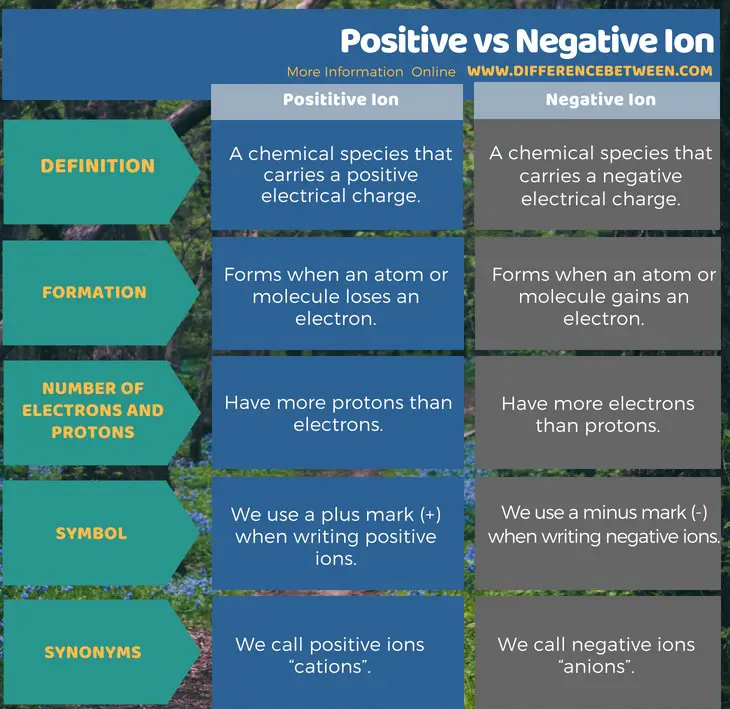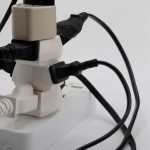Last Updated on 1 year by Francis
We all know that electricity powers so many of the appliances and devices we use every day, but have you ever thought about what actually makes electricity? To understand what makes electricity we must first understand the difference between negative and positive charges. Positive and negative charges are the basis of electricity, and in this article we will explore what makes them different and how they work together to create a flow of electricity.
Negative and Positive Charge: Negative and positive charges are the two types of electric charge. Opposite charges attract one another, while like charges repel. Negative charge is carried by electrons, while positive charge is carried by protons. Electrons are negatively charged, while protons are positively charged. When an atom has an unequal number of electrons and protons, it becomes electrically charged. The imbalance of charge creates an electric field and a force of attraction or repulsion between particles.

Contents
What is the Difference between Positive and Negative Charges?
Charge is a fundamental property of matter that is responsible for the interaction of particles within an atom or between atoms. Charge is often referred to as either positive or negative and can be either conserved or created. Positive and negative charges are the two types of charge. In this article, we’ll discuss the difference between them and the way they interact with each other.
Positive charge is a type of charge that is due to an excess of protons in an atom or molecule. It is represented by the symbol “+” and is usually found on the nucleus of an atom. Positive charges are attracted to negative charges and repelled by other positive charges. Thus, when two positive charges are brought close together, they will repel each other.
Negative charge is a type of charge that is due to an excess of electrons in an atom or molecule. It is represented by the symbol “-” and is usually found on the outer parts of an atom. Negative charges are attracted to positive charges and repelled by other negative charges. Thus, when two negative charges are brought close together, they will repel each other.
How Positive and Negative Charges Interact with Each Other
Positive and negative charges interact with each other in a variety of ways. When two positive charges are brought close together, they will repel each other. This is because they both have the same type of charge and thus will push each other away.
On the other hand, when two negative charges are brought close together, they will attract each other. This is because they both have opposite types of charge and thus will pull each other closer together.
Examples of Positive and Negative Charges
Positive charges can be found on the nucleus of an atom, while negative charges can be found on the outer parts of an atom. Examples of positive charges include protons, which are found in the nucleus of every atom. Examples of negative charges include electrons, which are found in the outer parts of an atom.
Effect of Positive and Negative Charges on Matter
Positive and negative charges affect matter in different ways. Positive charges tend to make matter denser, while negative charges tend to make matter less dense. This is because positive charges attract other positive charges, while negative charges repel other negative charges.
Applications of Positive and Negative Charges
Positive and negative charges have a variety of applications in the real world. For example, they are used in electric circuits to create electrical currents. They are also used in battery cells to store and release electrical energy. In addition, they are used in electron microscopes to magnify objects.
Frequently Asked Questions
What is the Difference Between Negative and Positive Charge?
Answer: In the world of electricity, a negative charge is the opposite of a positive charge. Positive charges have more protons than electrons, while negative charges have more electrons than protons. Positive charges are attracted to negative charges, and negative charges are attracted to positive charges. These opposite charges attract each other, creating a flow of electricity. In a circuit, positive charges and negative charges can both flow, creating an electrical current.
What Causes a Negative or Positive Charge?
Answer: A negative or positive charge is caused by the number of protons and electrons in an atom. Atoms are made up of protons and neutrons in the nucleus, and electrons in orbit around the nucleus. Atoms will either have an unequal number of protons and electrons, or an equal number of protons and electrons. If an atom has more protons than electrons, it will have a positive charge. If an atom has more electrons than protons, it will have a negative charge.
How Do Positive and Negative Charges Interact?
Answer: Positive and negative charges interact through an electric field. When two charged particles come close to each other, their electric fields interact, creating an attractive or repulsive force. Like charges, such as two positive charges, will repel each other, while opposite charges, such as a negative and a positive charge, will attract each other. This attraction or repulsion of charges can create a flow of electricity in a circuit.
What Are Examples of Positive and Negative Charges?
Answer: Examples of positive charges include protons, which have a single positive charge, and positive ions, which have multiple positive charges. Examples of negative charges include electrons, which have a single negative charge, and negative ions, which have multiple negative charges.
What Are the Effects of Positive and Negative Charges?
Answer: The effects of positive and negative charges depend on the environment. In a vacuum, positive and negative charges attract each other, creating an electric field that can be used to create electricity. In a conductor, such as a wire, positive and negative charges interact to create an electrical current that can be used to power appliances or other devices.
How Can Positive and Negative Charges Be Controlled?
Answer: Positive and negative charges can be controlled by using electrical components such as resistors, capacitors, and inductors. These components can regulate the flow of current in a circuit, allowing for the control of the amount of positive and negative charges. The combination of components and their values can be used to create a desired voltage or current in a circuit.
Positive and Negative Charge
The difference between negative and positive charge is an important concept to understand when studying electricity and magnetism. Negative and positive charges are like opposite sides of the same coin, each having its own properties and behaviors. Negative charges are attracted to positive charges while positive charges are attracted to negative charges. This attraction and repulsion between the two charges is what allows electricity to flow and power to be generated. Therefore, understanding the difference between negative and positive charges is important for a comprehensive understanding of electricity and magnetism.








